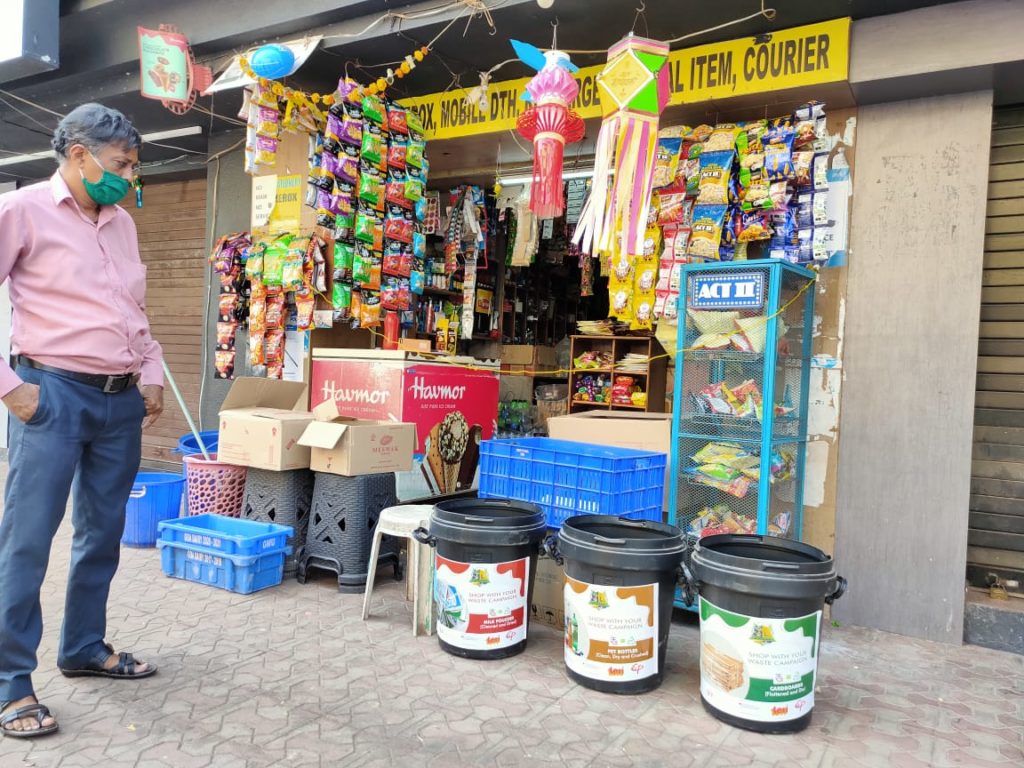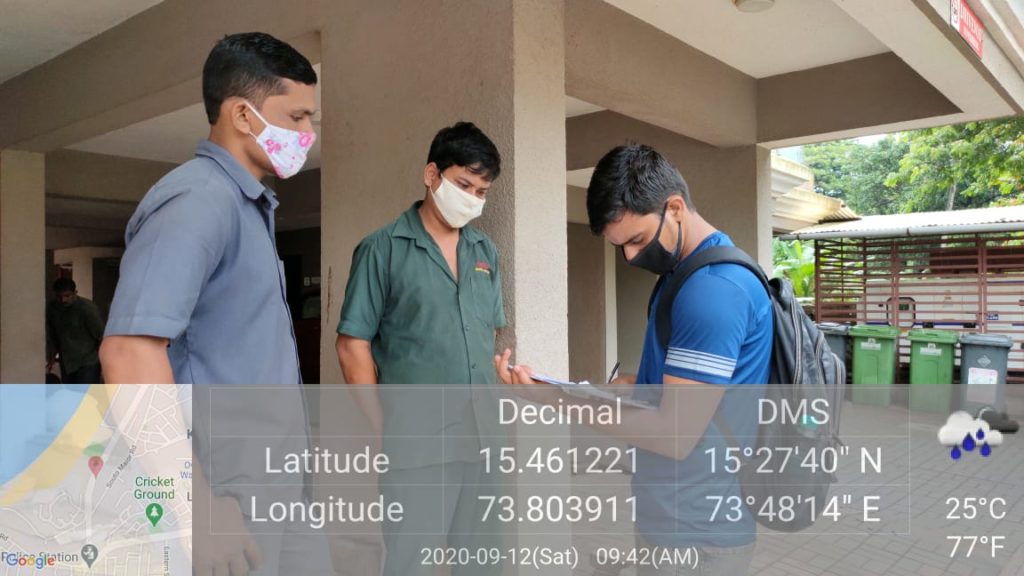
Goa has been in the news of late for its various waste-management pursuits. State capital Panaji recently announced plans to set up biomethanation plants across the city to cut down on wet-waste, even as it implements a 16-way segregation policy. A much-publicized Shop With Your Waste Campaign last month has also yielded an encouraging response.
The German Development Agency, GIZ, has played an active role in helping the city and state work towards its waste management goals. SolidWasteIndia caught up with Mr Vaibhav Rathi, Technical Advisor – Climate Change, GIZ to discuss how the GIZ’s collaboration with Goa has progressed over the years – and the road ahead.
Q1. The GIZ is involved in many waste management related activities in Goa under the NAMA project. Could you please tell us more about NAMA?
The concept of NAMA originated in the Bali Action Plan (2007) at COP13 to denote voluntary mitigation actions by developing countries after 2012. Nationally Appropriate Mitigation Actions or NAMAs are taken up by developing country parties in the context of sustainable development, supported and enabled by technology, financing, and capacity building, in a measurable, reportable, and verifiable manner.
The development and management of NAMAs in India was commissioned to the German development agency Deutsche Gesellschaft für International Zusammenarbeit (GIZ) GmbH in 2013 by the Federal Ministry for the Environment Nature Conservation and Nuclear Safety (BMU), Germany with the Indian Ministry of Environment Forest and Climate Change (MoEFCC) as the lead executing agency. The project has also received support from Ministry of Housing and Urban Affairs (MoHUA).
Across India, lack of man-power with city administrations has always been a challenge. The work is simply too much and available hands are few. Panaji faces a similar challenge.
Mr Vaibhav Rathi, Technical Advisor – Climate Change, GIZ
The development and management of NAMAs in India was commissioned to the German development agency Deutsche Gesellschaft für International Zusammenarbeit (GIZ) GmbH in 2013 by the Federal Ministry for the Environment Nature Conservation and Nuclear Safety (BMU), Germany with the Indian Ministry of Environment Forest and Climate Change (MoEFCC) as the lead executing agency. The project has also received support from Ministry of Housing and Urban Affairs (MoHUA).
Two sectors were identified for implementation of NAMAs – Forestry and Waste. Varanasi and Goa were chosen for pilot implementation of NAMAs project in the waste management sector.
NAMA is being implemented by GIZ in collaboration with the Delhi-based think-tank, The Energy Resources Institute (TERI) as a partner. It includes pilot-project implementation in the waste sector in Varanasi, Panaji, and other cities of Goa. The main objective of the project is to implement SWM solutions that lead to a reduction in GHG emissions and build capacities of various stakeholders in the waste management value chain.
Q2. The GIZ created a buzz in Panaji with its Shop With Your Waste (SWYW) Campaign launched on October 2. Could you tell us more about the initiative?
The SWYW campaign designed as part of the NAMA project with support from the Corporation of City of Panaji (CCP) permits shops to trade PET bottles, cardboard, and milk pouches through a barter system against items of daily use like grocery, electronics, medicine, cloth, etc. These waste items have to be brought in a minimum quantity displayed on the shop. The shops taking recyclable waste from generators will eventually be linked with a large-scale waste dealer within Panaji, 21st Century Polymers Pvt. Ltd., who will buy the recyclables from them.

We believe this unique campaign will provide opportunities to help manage waste through citizen participation and create economic opportunities for entrepreneurs dealing in recyclable commodities. It’s important to infuse a feeling of value attached to every recyclable waste item and make citizens realize that waste is a resource. This will also leverage better socio-economic conditions for informal waste collectors and waste workers who will be able to exchange segregated waste at multiple points for daily use items. The Municipal Commissioner of Panaji, Mr Sanjit Rodrigues is very keen to replicate this model in several places across the city and state. Starting with one shop, the concept is now adopted by two more shops in Panaji within two months of it’s launch.
Q3. GIZ’s approach to Goa’s waste management situation has been very structured and data-driven which is still fairly uncommon in India…
Indeed. GIZ’s involvement in Goa began nearly 2.5 years ago under the NAMA project with a Citizen Perception Survey in Panaji. We first conducted a month-long baseline survey to understand what citizens know and understand about services provided by the CCP on waste management. We also did a Climate Carbon Mitigation Potential Study to understand the potential of reducing carbon emissions from existing waste management facilities. Panaji, which is already doing way better in waste management than other cities, wanted to leapfrog.

As a part of these zeal-to-improve-measures, the municipal commissioner of Panaji has now asked the NAMA project to audit about 80 colonies in Panaji for their waste management practices. The objective is to analyze all colonies in Panaji for their waste management efficiencies and provide recommendations to the municipal corporation for improvements. About 78 colonies have already been audited by the project.
Q4. What are some of the GIZ’s other activities in Goa?
GIZ has done a lot of training and capacity building programs in Goa, along with outreach and awareness campaigns. We conducted a consultation on Extended Producer Responsibility (EPR) where many plastic producers, recyclers, civil society expressed their views on how a state-level implementation framework on EPR for plastic waste management could be designed.
We also organised webinars for all 14 Municipal Corporations and councils in the state on various topics in waste management such as SWM Rules 2016, home composting and RDF utilization.

Another unique initiative under the NAMA project involved a state-level consultation between the All Goa Scrap Dealers Association (AGSDA) and Goa Waste Management Corporation (GWMC). The objective of the consultation was to connect the parties and discuss important issues faced by AGSDA members including how to formalize themselves through online portals set up by the state government.
Q5. The GIZ has also been promoting wet-waste management in Goa through biomethanation. Could you tell us more about that?
WtE technologies such as bio-methanation are very promising in terms of sustainable wet waste management. GIZ has worked with TERI in Panaji to build capacities of restaurants and hotels on wet-waste management using compost and bio-methanation. We held various consultations to encourage bulk generators such as hotels and restaurants to process their wet waste, which also contributed to a white paper comparing composting and biogas technology. It was a techno-feasibility analysis of each technology in terms of implementation, cost, impact on carbon emissions, etc., and was distributed widely so that stakeholders could determine which technology they should invest in. This effort contributed to a state-level advisory committee chaired by the department of municipal administration to standardize designs of biomethanation to electricity plants suitable to the state. Based on recommendations of the committee, the state has announced plans to install several small biomethanation units of five tonnes per day waste processing capacity in municipal councils of Goa.
Q6. You are very appreciative of Panaji’s efforts in SWM. What are some of the key distinguishing factors that make the city stand-out as compared to other Indian cities?
Pro-active efforts by the administration in Panaji had led to real changes in the city. The Municipal Commissioner Mr Rodrigues, along with his team, has been the real architect of Panaji’s pioneering efforts in waste management since 2005. The city understood very early that decentralization and source segregation of waste management are the key elements for sustainable waste management. The administration put all its efforts into making these concepts a reality in the city.

Q7. Conversely, what are some of the challenges the city must be overcome to further improve their SWM system?
Across India, lack of man-power with city administrations has always been a challenge. The work is simply too much and available hands are few. Panaji faces a similar challenge. The city needs to sustainably manage its wet waste. Processing needs land and the city has very little of it. Therefore, it is now upgrading to ultra-decentralization. It is asking the restaurants and other bulk waste generators to consider processing wet waste using biomethanation or composting within their premises so that it is processed at source. The city has now started with 16-way segregation. It is an ambitious program and challenging to replicate at a city level.
Q8. In Germany, large scale Waste-to-Energy projects are the norm. What are your views on WtE and its relevance in the Indian context?
Technical analysis done by several organizations across the country shows that incineration of waste to generate electricity is not conducive to Indian waste characteristics nor contributes to carbon mitigation potential. Also, waste to energy is not financially viable at places where waste generation rates are low.
However, co-processing of low-value and non-recyclable waste in cement kilns as Refuse Derived Fuels (RDF) is promising. The reason being that incineration happens at much higher temperatures in a cement kiln as compared to a WtE, which leads to complete burning of waste and cuts off the generation of toxic gases. The residual carbon after the burning of waste adds to the property of cement hence there is no fly ash left.
Due to stringent compliance measures, cement companies are already equipped to control emissions which reduces the risk of air pollution. Under NAMA, GIZ has supported the Ministry of Housing and Urban Affairs to prepare a guidance document on the use of RDF in various industries for MoHUA.
Photo Credits: Vaibhav Rathi, GIZ



